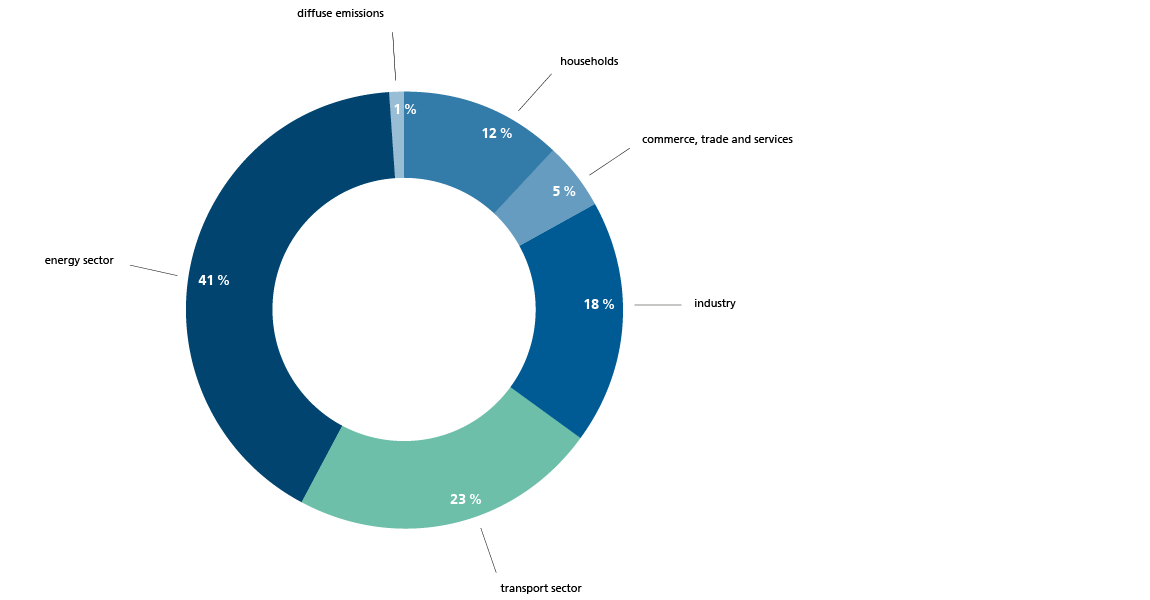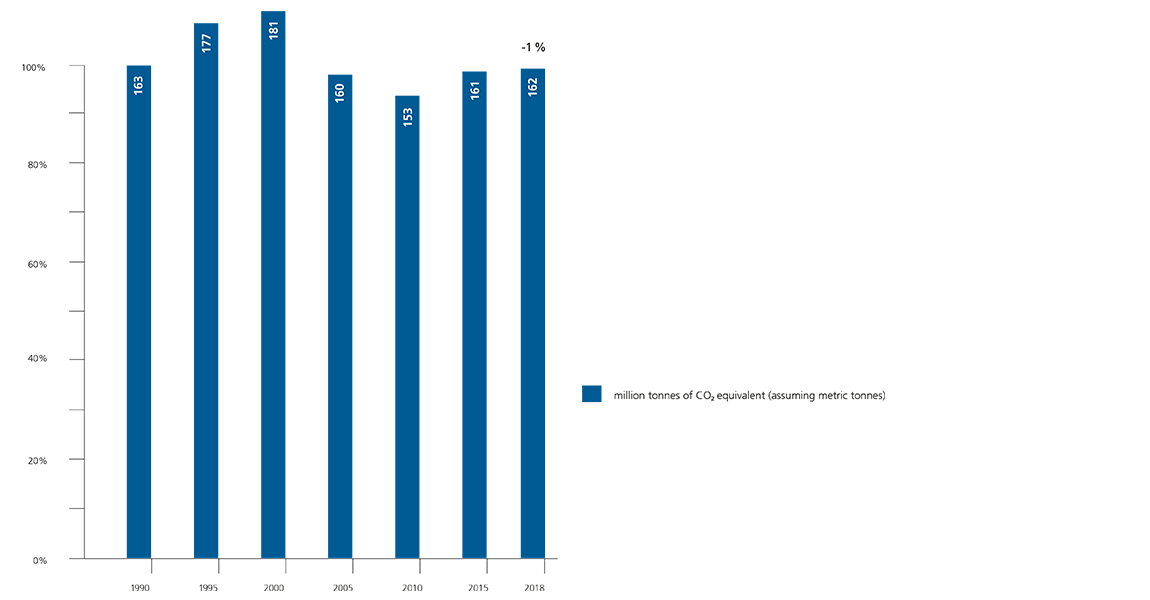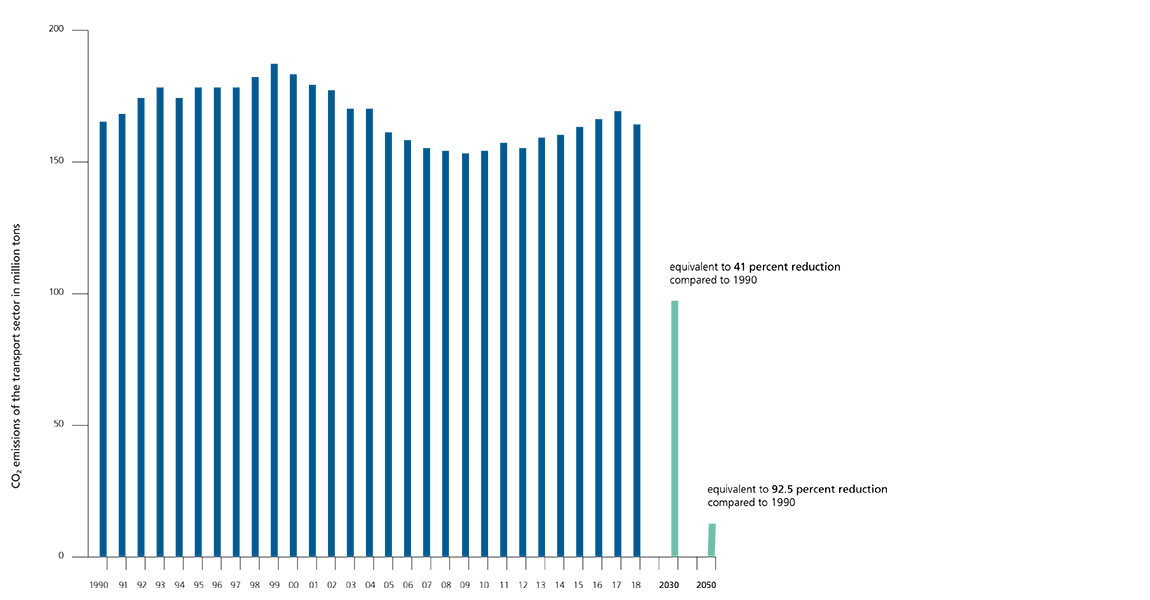The energy transition in the transport sector is a basic prerequisite for meeting the climate protection goals of the Paris Agreement. New technologies for vehicles and infrastructure offer comprehensive solutions for the emission-free driving of tomorrow.
Sustainable Mobility – New Technologies for the Transport Sector
What is Sustainable Mobility?
Sustainable mobility includes various measures to reduce CO2 emissions, such as car sharing, expanding public transport as well as the principle of having short distances. Also the digital automation and networking of vehicles are central. Especially important is the further development of alternative drive systems such as battery and fuel cells. Although the market share of electric and hybrid vehicles rose from 1.8 % to 2.6 % by mid-2019, the limited range, high acquisition costs and regional gaps in the charging infrastructure require further technical innovations and new scientific approaches. At Fraunhofer ISE, we therefore conduct transdisciplinary research on new technologies for the sustainable mobility of tomorrow, taking all drive systems into account.
Why New Technologies Need Priority
23 % of CO2 emissions are attributable to the transport sector, of which the majority is due to motorized individual traffic. While the need for mobility is forecast to increase by around 30 % by 2030, the implementation of the climate protection plan for transport has come to a standstill: Instead of saving 40 % of greenhouse gas emissions, CO2 emissions in this sector – unlike in other areas – have not fallen since 1990. In fact, ecological, economic and social aspects play a greater role in mobility than in hardly any other sector. The basic prerequisite for a successful transition to sustainable mobility is therefore social acceptance and the close cooperation between industry, science and politics.
Jointly Putting Sustainable Technologies on the Road
The energy transition in the transport sector can only succeed if industry and science work together. As the largest solar research institute in Europe, Fraunhofer ISE is researches application-oriented methods and technologies in the field of sustainable mobility across the entire value chain. Our industrial partners benefit from an outstanding R&D infrastructure with seven laboratory centers, four technology innovation centers and six accredited test and calibration facilities on a total area of 16,000 m2. This offers companies not only the opportunity to reduce costs and secure competitiveness, but also to actively shape the transport of the future.
Numbers and Data on this Topic
Share of CO2 emissions from the transport sector

Source: German Environment Agency UBA, National trend charts for German reporting of atmospheric emissions 1990-2018, status 01/2020
Reduction in CO2 emissions in the transport sector since 1990

Source: German Environment Agency UBA.
Reduction in CO2 emission required by 2030

Source: Federal Ministry for the Environment, Nature Conservation and Nuclear Safety (BMU).